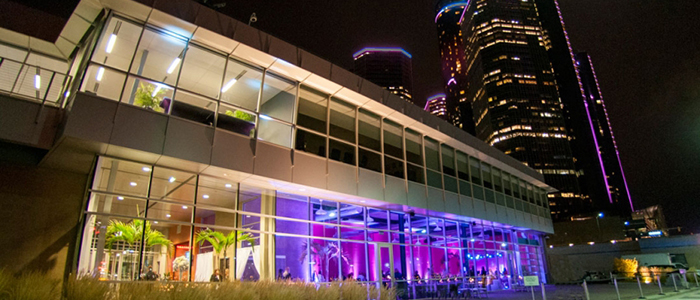Women Lighting the Way
By Vivian Henoch, Editor myJewishDetroit
May 1, 2014
They came, they spoke, they enlightened. And they wowed us.
The event: Women Lighting the Way in the D Annual Luncheon
The hosts: Jewish Women’s Foundation of Metropolitan Detroit, dedicated to expanding opportunities and enriching the lives of Jewish women and girls through strategic grant making and education. The Foundation empowers its Trustees as philanthropists, social advocates and leaders. Randie Levin, Chair, Susan Cassels Kamin, Director.
The place: Waterview Loft at Port Detroit
The panelists: Mary Kramer, Publisher Crain’s Detroit Business; Faye Alexander Nelson, President DTE Energy Foundation, former President and CEO of the Detroit RiverFront Conservancy; Cindy Pasky, CEO and President, Strategic Staffing Solutions (S3); Laura J. Trudeau, Senior Program Director, Community Development, Detroit, The Kresge Foundation; Jackie Victor, Founding Partner, Avalon International Breads.
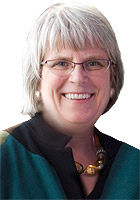
Representing viewpoints from strategic positions as business opinion leaders, entrepreneurs, grantmakers, advocates and change agents, the discussion with moderator Mary Kramer was passionate, brilliant and altogether pro Detroit. Excerpts follow:
ON THE DETROIT RIVERFRONT
Mary: When I think of the one person most responsible for making the Detroit RiverFront what we see here today – with three and a half miles of public access, bringing the river back to life for us—it’s Faye Alexander Nelson. For ten years, Faye led the team that created the whole strategy for opening the riverfront for the first time in decades. Moving from the Conservancy to the DTE Foundation, she’s shifted from raising money to giving money away. Way to go, Faye!
Question: Faye, describe the transformation of the river. What are you most proud of?
FAYE: When I joined the RiverFront Conservancy as its first employee, it was a stretch to envision a vibrant riverfront. It was a wasteland, property utterly abandoned, blighted by empty buildings, burned-out cars and acres of weeded concrete lots. But we had this beautiful blue river! So the question was how do we wrap our arms around this project? We were so appreciative of the significant support of our partners, led in large part by the Kresge Foundation, General Motors and the City of Detroit.
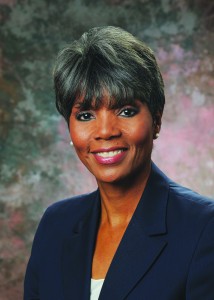
It’s been quite a journey. At the outset, there was a lot of pushback and self-doubt from the community, but what I am most proud of is what the community has accomplished. I had the privilege of being there at the start, being the face of this development, but it would never have occurred without the strong support of the entire community – the public sector, the private sector and the broad-based community – all coming together to support the revitalization and sustainability of our waterfront.
And now? There are more greenways – an estimated 26 miles of access – being developed as we speak. Imagine as we continue to build out to the Ambassador Bridge what a cool city Detroit will be.
ON GRANTMAKING AND CITY BUILDING
Mary: The Kresge Foundation is a global organization with a strong focus on Detroit, and Laura Trudeau is at the top of that focus. The grant from Kresge to the Detroit RiverFront Conservancy represents the single largest gift in the history of the foundation. Kresge has supported many programs in the arts and if all goes as planned, Kresge will play a large part in the funding that is going to help leverage the Detroit Institute of Arts as a private non-profit institution. Laura is involved in the nine-point framework called Reimagining Detroit 2020, repositioning Detroit as a model for revitalization.
Question: Kresge has done so much with the big projects – the Riverfront, M-One Rail, saving the DIA arts. Where do you see the neighborhoods fitting into downtown development? What is the neighborhood strategy from your viewpoint?
Laura: Kresge has a history of making large capital grants. That’s something in our DNA and unusual for a foundation. We look at those projects in terms of what an impact public space has on people. We also have invested for many years in neighborhoods – focusing on education reform and workforce development. With the downturn in 2008-2009, we looked for the place in the city that we thought could be the most catalytic to strengthening Detroit as a whole. Clearly, it was what we call the “Reverse T” — the Jefferson Avenue and the Woodward Corridors. We had invested in the Riverfront starting in 2002, and we thought our best approach would be to work our way up Woodward into neighborhoods like the North End neighborhood, central Woodward, the area around Focus Hope, Eastern Market, Corktown – the list goes on and on.
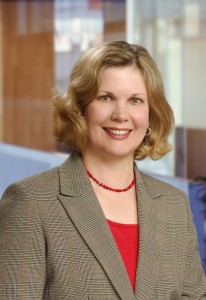
What’s next for Kresge? Great cities are defined by their green, oftentimes historic, but always vibrant residential areas, along with a strong commercial core. You need both. The commercial core provides the tax base, and the arts play a huge role in defining the identity of a city. So we have a multi-faceted program, starting with the Detroit City Platform that was developed two years ago as a roadmap for investment in neighborhoods. (To see what that looks like, go online www.detroitfuturecity.org or get the 60-page executive summary by contacting the office.)
ON DETROIT BUSINESS DEVELOPMENT
Mary: Here in Detroit, Cindy Pasky has built her business into a global company with 22 branches with revenues of more than $200 million. She has maintained the original core, based on the principle that she can do well with that company by doing good work. To Cindy, charity and community are linked to her business, and both are very important to her. She chairs the Downtown Detroit Partnership and serves on numerous boards, including The Community Foundation and DIA.
Question: Cindy, you have built this amazing company. Your revenues keep going up every year, you have expanded new offices with new opportunities and new clients. Your business can be anywhere, why did you start in Detroit and why did you stay?
Cindy: The simple answer is that Detroit is my home. My grandparents came here in 1911; my dad went to Pershing High School; I spent every Saturday at my grandparents’ house. Sure, I could take my company anywhere, but I started S3 here. As you become engaged in the community, as you meet individuals, as you become involved, you realize all those personal connections help you from a business standpoint as well. You can’t just pick up and replicate where you are and who you know and expect to have the reputation, the good will, the relationships and all the influence to raise money and create change in a place you don’t know. It doesn’t happen that way. Detroit is and always will be my home and headquarters. For my grandparents, coming here was their chance for independence, freedom and safety; they deserve that I stay here and try to create the opportunities they enjoyed – now for a new generation of residents in the city.
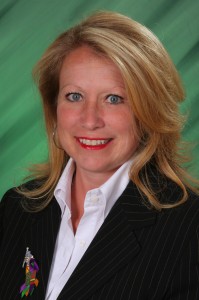
ON NEIGHBORHOODS AND ENTREPRENEURS
Mary: Another for-profit which has done well by doing good, Avalon International Breads, a socially responsible artisan bakery in Detroit, was founded in 1997. Midtown is hot these days, but when Jackie Victor opened the doors of Avalon Bakery, Midtown was different than what we see today. Talk about “pioneers,” Jackie was there at the very start. She saw the vision of what Detroit could be and wanted to be part of an economic, cultural and spiritual revival.
Question: Jackie, describe opening Avalon and what do you think about what’s happening now?
Jackie: A lot of young people in their 20’s are moving to Detroit now and they think of our neighborhood as “Midtown.” When we moved in, it was called the Cass Corridor. There were some students and artists living there. To give you some perspective on the decline of the neighborhood at the time, it was in 1997 and it was clear that the social fabric of the city was unraveling and people were falling through the social safety net. It was winter — a very cold winter – when we opened the bakery, and there were 300 homeless people living in a tent city just one block south of us in front of a church. We wanted our bakery to have windows and our landlord actually told us the neighborhood was “not ready for windows.” And we asked, what are they going to steal… the oven? So we put windows in and within the first weeks of construction, people kept knocking on our doors asking, “When are we going to open?” They called us the bread ladies and we got to know the neighborhood because we lived there. Then, two weeks before we opened, we started baking these test loaves, really misshapen, and people would knock on the door and ask us to sell them – and we’d say no, just take them, but they paid us for them and we raised so much money this way, by mistake, that we actually had money for our grand opening, which was not in our budget.

Our grand opening was a grand event: CEOs and homeless people, students and anarchists, government officials, all on the same street — so that’s when we knew something special was happening here.
Flash forward, 17 years later, we’re now Midtown — a very different place. On the one hand, it’s great to see the economic revival. And on the other hand, I still worry about the neighborhoods. They’re not getting better, they’re getting worse. And the surge downtown is giving us the illusion that our city is on the comeback. We’re on the comeback for a small percentage of people, while the neighborhoods are getting more and more isolated. So that is my concern.
ON DETROIT’S FUTURE
Mary: Now let me ask each of you from your own perspective – what are the challenges you see for Detroit’s future?
Faye: First and foremost, the challenge is to get the city out of this bankruptcy – in a way that can provide a healthy balance sheet and the efficiencies Detroit needs to move forward as a city. We need to take into consideration our art, as well as the pensioners who have been caught in the middle.
Another challenge would be the issue of safety – or the perception of crime in the city. We have to address that issue because for the three million-plus folks who visit the Riverfront every year, it’s important for them to know they are safe, not just on the waterfront, but in all the wonderful places here in Detroit.
And the final piece is education – and literacy — two issues connecting directly to jobs and developing our workforce for the future. Economic viability, safety and education — those are the core issues that any city has to stand strong on to be successful.
Laura: I would add that we must address the issue of blighted structures in our city. That is holding a lot of our neighborhoods back in the process of revitalization. And for that reason, a quick and expeditious settlement of the bankruptcy issue is of utmost importance. We see opportunity in this issue, not only to remove the vacant structures that are defining our community, but also to create jobs.
Jackie: Back to the neighborhoods and to our experience with Avalon: we’ve seen the opportunity to serve in an underserved community, and we did it at that time with a lot of dignity and respect for our customers and employees. Our challenge as entrepreneurs is to build upon that synergy we see now in Midtown and to focus on the neighborhoods that are all too often overlooked. I’m excited about the opportunities for seed entrepreneurism with the potential to be a magnet (as in Midtown) for other micro entrepreneurs to service the neighborhoods as a partner.
Cindy: I think a city is only as good as its leadership. So if you want to keep those neighborhoods and green spaces growing and vibrant, we need to have people who recognize the need, engage in the conversation. We need people who hold our leaders accountable. . . and who vote to keep that leadership in place. We have to stop walking by the people we don’t want to see – our homeless population and the 47% of adults in the city who cannot read beyond the 3rd grade level. We can’t revitalize our city without creating jobs and neighborhoods for them, because they are our city!

